Two weeks ago, we saw Chelsea take on Ajax in the UEFA Champions League on matchday three at the Johan Cruyff Arena, where Chelsea were able to get a late goal and win the match 0-1 much to the surprise of many. Last year’s semi-finalists were coming to Stamford Bridge on a mission to retaliate, and claim the top spot of Group E.
All was going to plan for the Dutch side, up 1-3 by half-time, and scoring a fourth in the 55th minute. However, that fell apart after two successive red cards to Erik ten Hag’s team which saw them understandably crumble against Frank Lampard’s side who had a two-man advantage. The match finished 4-4, allowing Chelsea to keep the top spot in the group solely on goal difference.
This tactical analysis will use analysis to look at the tactics both teams employed to see why Ajax were so dominant in the first half, and how they were able to neutralize Chelsea until the two red cards.
Lineups
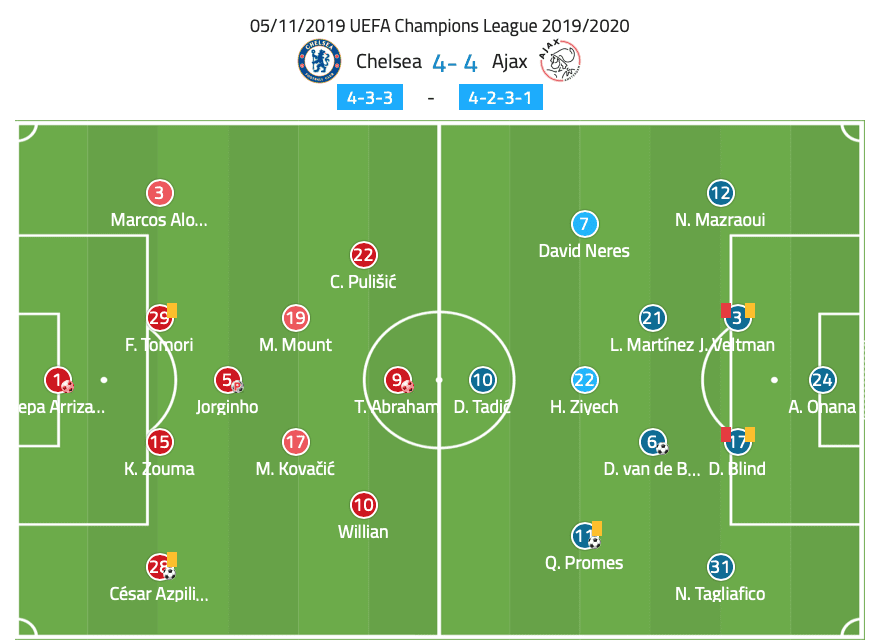
Lampard lined up his side in a 4-3-3 formation, very similar to the one named in Amsterdam. Kepa Arrizabalaga started once again in goal, with a back four of César Azpilicueta, Kurt Zouma, Fikayo Tomori, and Marcos Alonso in front of him. While Lampard claimed earlier that Chelsea’s best and most consistent midfielder, N’Golo Kanté, was back from injury, he seemed to still be cautious about his playing time. The French international was only deemed fit enough for the bench as Jorginho, Mason Mount, and Mateo Kovačić made up the midfield three. The front three was the only difference to the lineup that played against Ajax late last month, with Christian Pulisic getting the nod over Callum Hudson-Odoi. Alongside Pulisic, Willian and Tammy Abraham led the line.
The away side’s 4-2-3-1 saw a different back four than the one that started two weeks ago with Sergiño Dest relegated to the bench in favour of Noussair Mazraoui who had Joël Veltman, Daley Blind, and Nicolás Tagliafico start alongside him in front of goalkeeper André Onana. A double pivot in midfield consisted of Lisandro Martínez and Donny van de Beek, with Hakim Ziyech, David Neres, and Quincy Promes in front of them. Dušan Tadić led the line as a number nine up top.
Ajax’s man-marking
Ajax wanted to ensure that they’d limit Chelsea’s build-up play to a minimum, especially at home. Chelsea’s attacking play has been much to admire this season and it was clear that Ten Hag was aware that if Chelsea had the chances, they would eventually score, despite his defence being well-drilled and organised.
Thus, he decided to have his team press from the front. When Ajax were out of possession, they would not resort to a defensive formation straight away. Instead, their 4-2-3-1 shape allowed them to press high, which made it difficult for Chelsea to play their own game attacking wise.
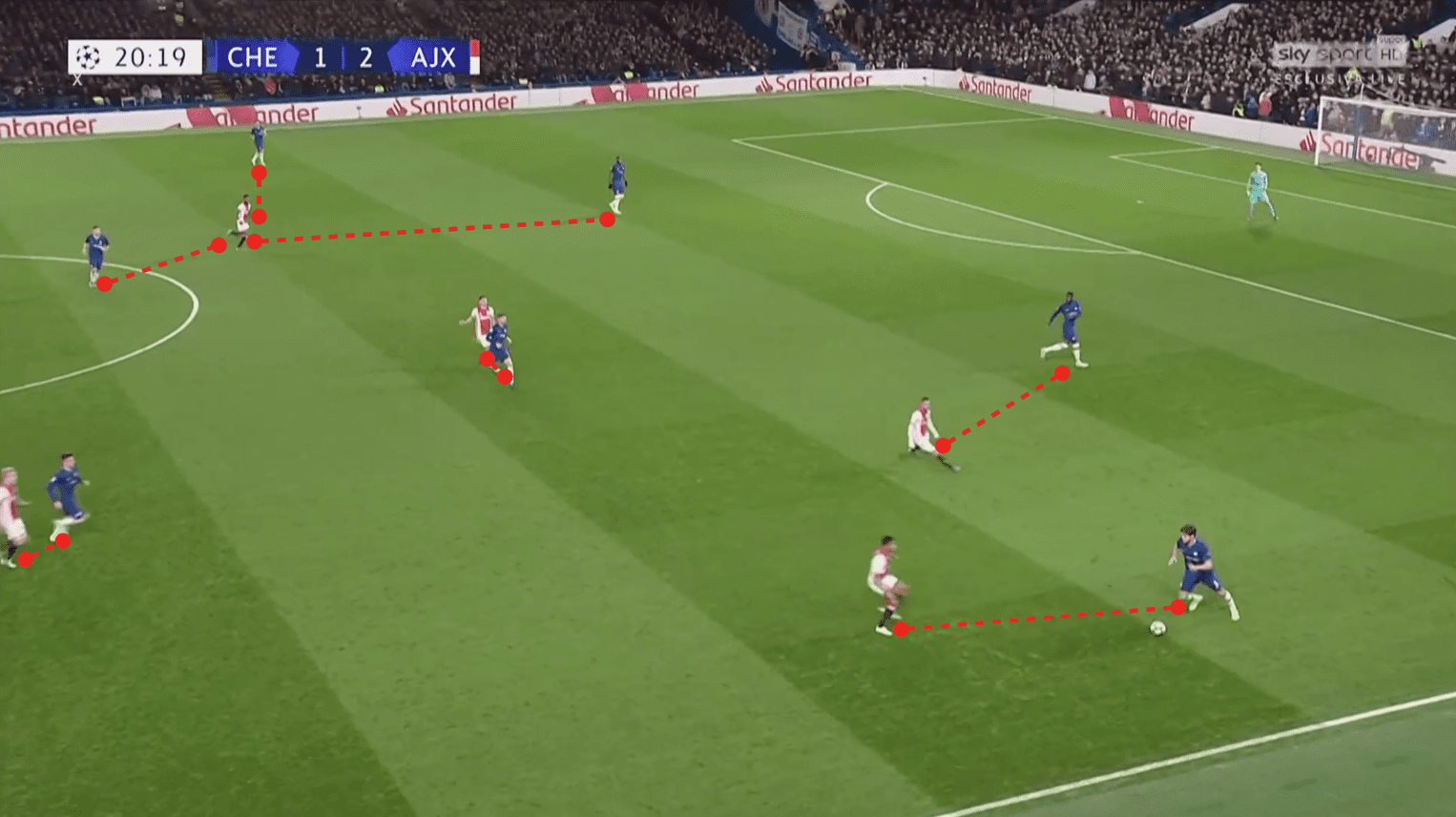
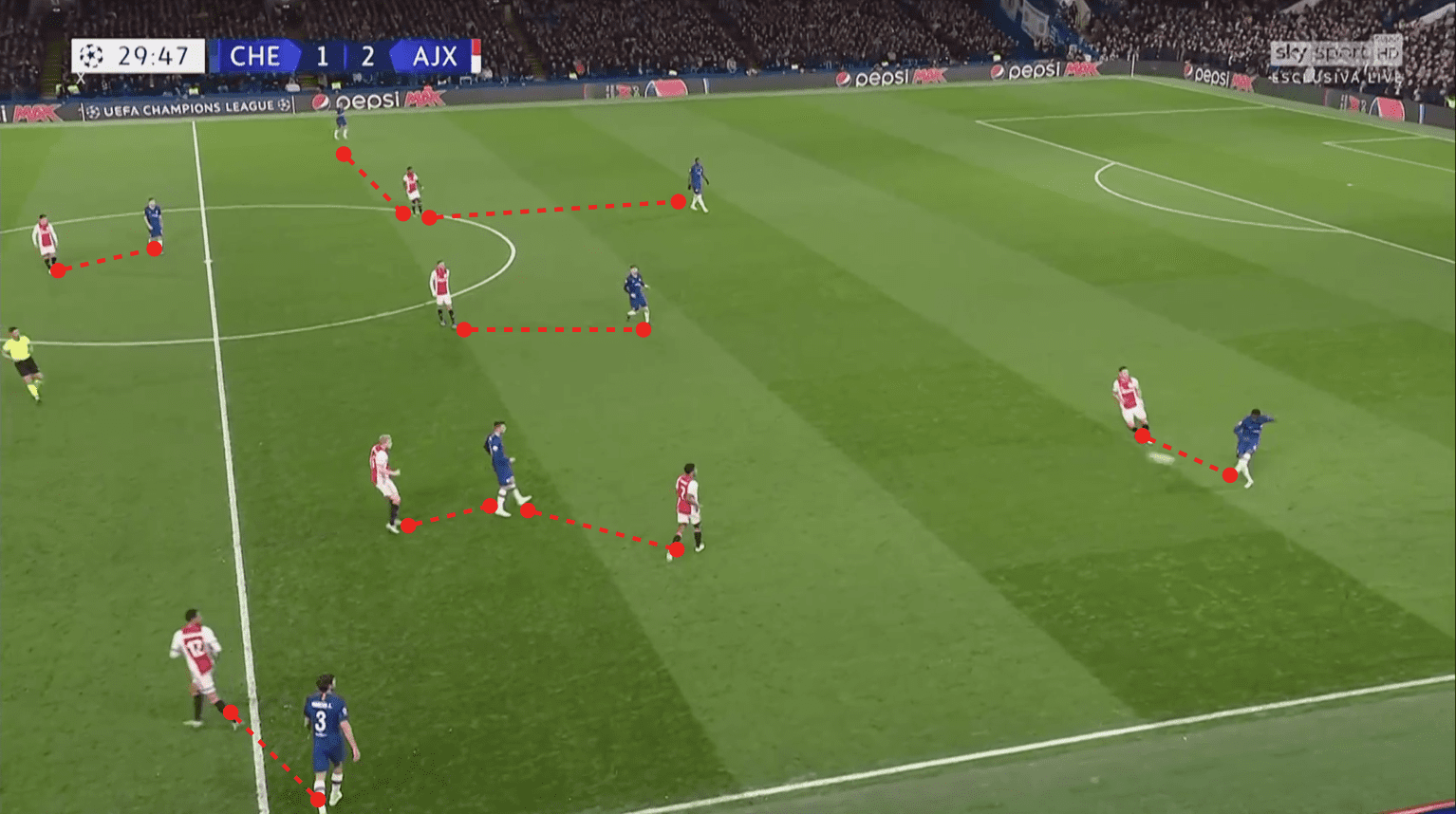
Pressing from the front is sometimes referred to as defending from the front. Rather than have his team in a defensive formation, each Ajax player was responsible for cutting off any obvious passing lanes that Chelsea had. This forced Chelsea to often meaninglessly pass the ball around the back for long periods during the first half.
Chelsea’s struggles
Chelsea also attempted to employ a press in the first half when Ajax had possession, but their’s was less successful because of a lack of communication and cohesion within the team. Chelsea players would often press but accidentally leave close passing lanes open, and Ajax were easily able to pass in and around them to commence their build-up play.
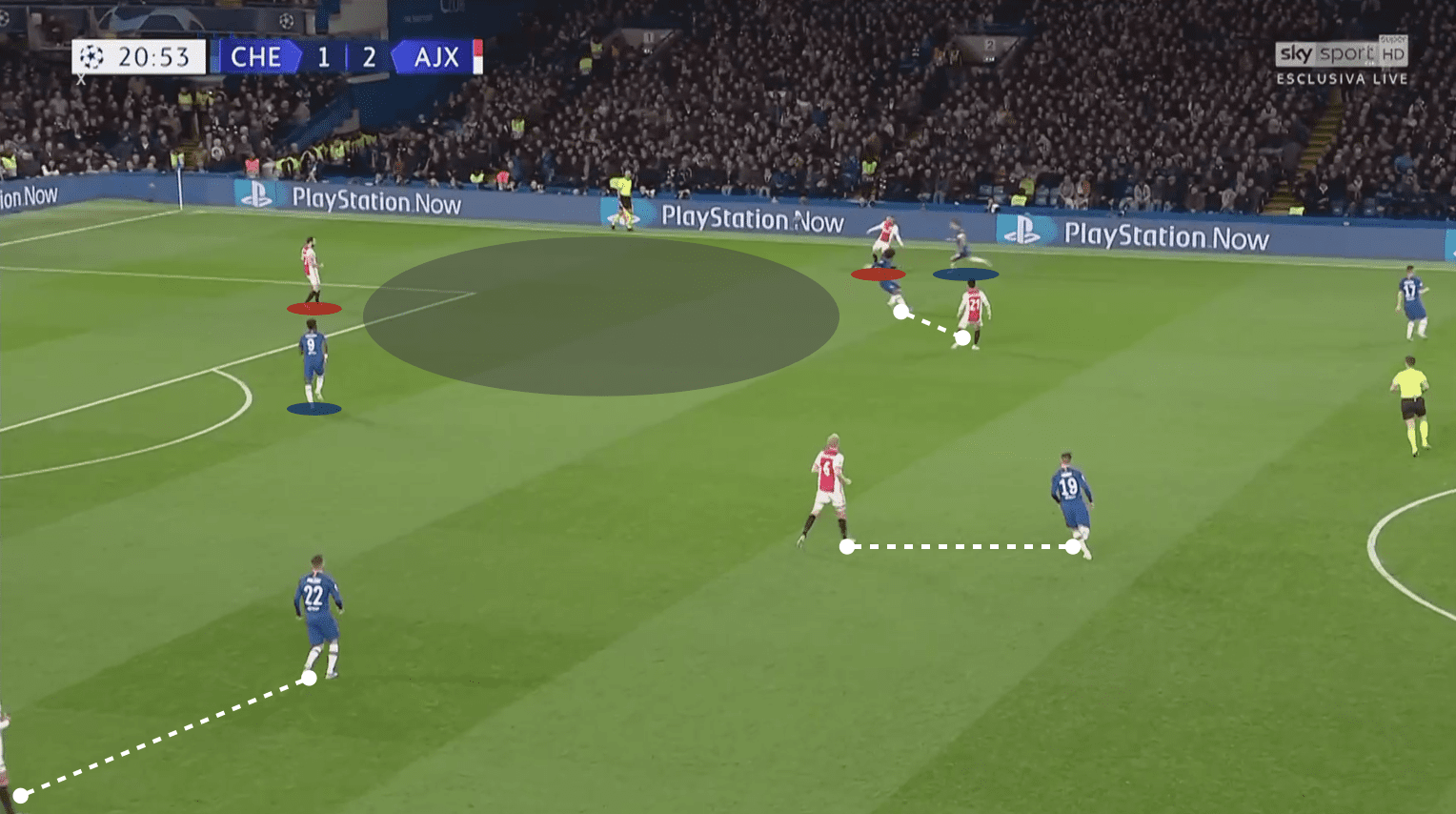
Chelsea also struggled in attack because of Ajax’s ability to nullify them. Attempting 48 long balls throughout the match, they attempted to use the height of Abraham as a target man with wingers Pulisic and Willian striving to win the second balls. However, this tactic got quite predictable, and Ajax were able to deal with it accordingly.
Red Card Chaos
At 1-4, it seemed like Ajax would cruise to a well-earned victory. However, two red cards to Blind and Veltman changed the game completely. It is incredibly rare for two red cards to be given in a match, especially to a team’s two centre-backs. If there was any doubt in Lampard’s mind that his team could make a comeback, the red cards eliminated that uncertainty.
About ten minutes before the red cards were issued, Lampard had switched to a 4-2-3-1. This allowed four attacking players to be on the pitch rather than just a front three. Bringing on Hudson-Odoi for the injured Mount played a part in this, but the 4-2-3-1 put more pressure on Ajax, and their man-marking of Chelsea’s original 4-3-3 became a bit more difficult for the away team.
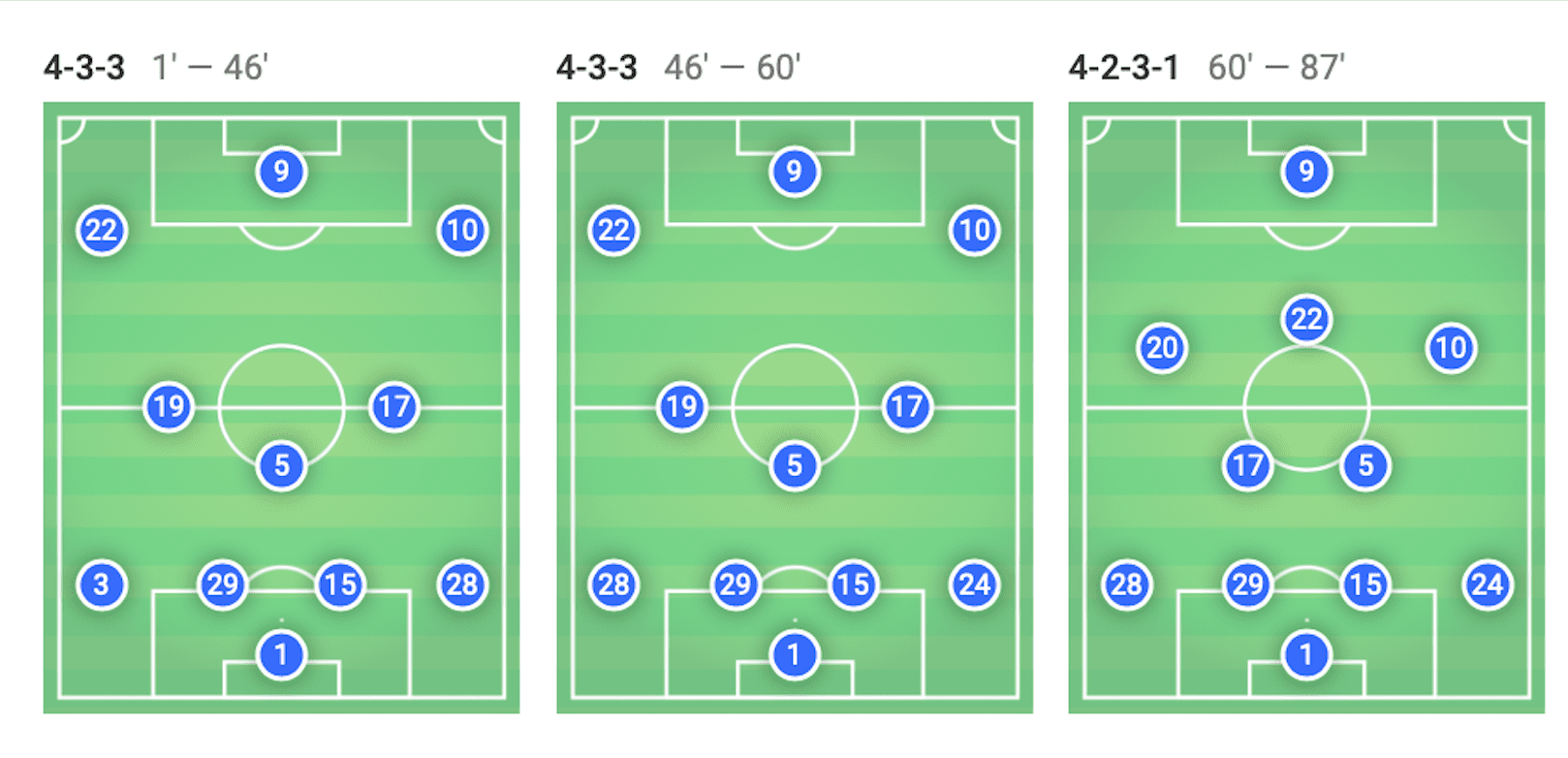
By the 87th minute, Chelsea had levelled the match to 4-4 and Lampard decided to again switch it up in search of a last-minute winner. He brought on Michy Batshuayi, a forward, for Kovačić, a midfielder. This final push meant Chelsea set up in a 4-1-3-2, with two strikers and three forwards behind them to support the attack.
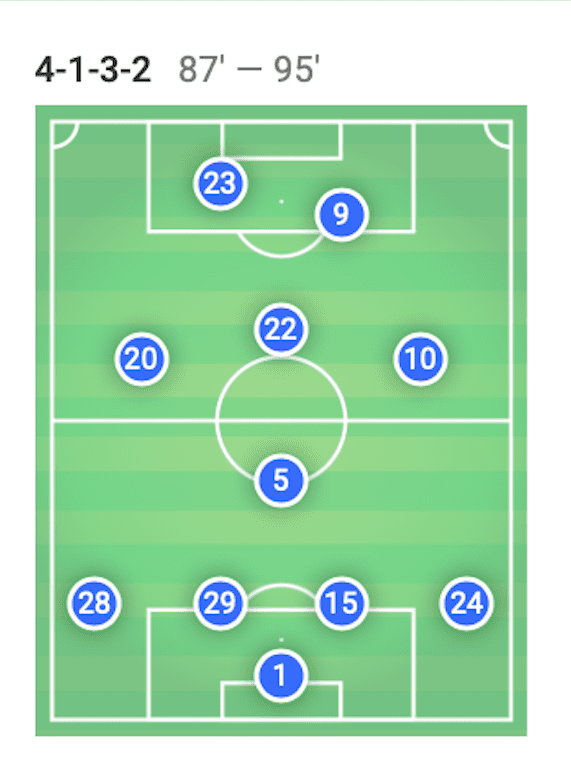
Unfortunately for Chelsea fans, they were not able to find this winner, and while Lampard has certainly shown his in-game tactical flexibility this season – especially over these two matches against Ajax, the one criticism I would have against him is that he did not switch to two strikers sooner. Ajax were down to nine men with over 20 minutes to go, so his choice to bring on Batshuayi so late is a bit strange. Although it is a risk to play with five attacking players, Lampard should have trusted that his defence would be able to hold off a nine-man Ajax team that were extremely pinned back, and were attempting to hang on to a lead rather than add more to it.
Ten Hag’s hands were tied when both his centre-backs were forced to walk off the pitch and down the tunnel with their heads down, leaving him with only eight outfield players. He switched to a 4-3-1 to attempt to hang on to the lead that Ajax had worked hard for in the first half.
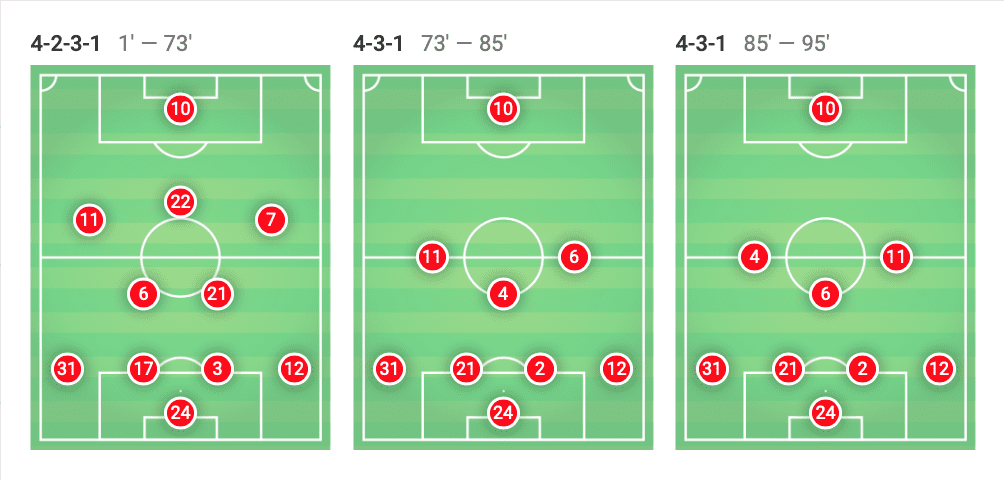
That being said, football is a numbers game, and the numerical advantage Chelsea had was too great. Ajax are a team who both in the Champions League and the Eredivisie want to play active, attacking football rather than passive football. To take a team that is not used to playing in a low block and ask them to do it while two men down was always going to be tough for Ten Hag. It was quite obvious that Ajax were uncomfortable and nervous playing a low block against Chelsea after the red cards.
Chelsea used their full-backs to stretch the pitch as much as possible while in possession. This forced the Ajax players to make a choice. Either defend wide, and create gaps centrally to be exploited, or defend narrow, and let the full-backs freely create chances into the box. A lose-lose situation.
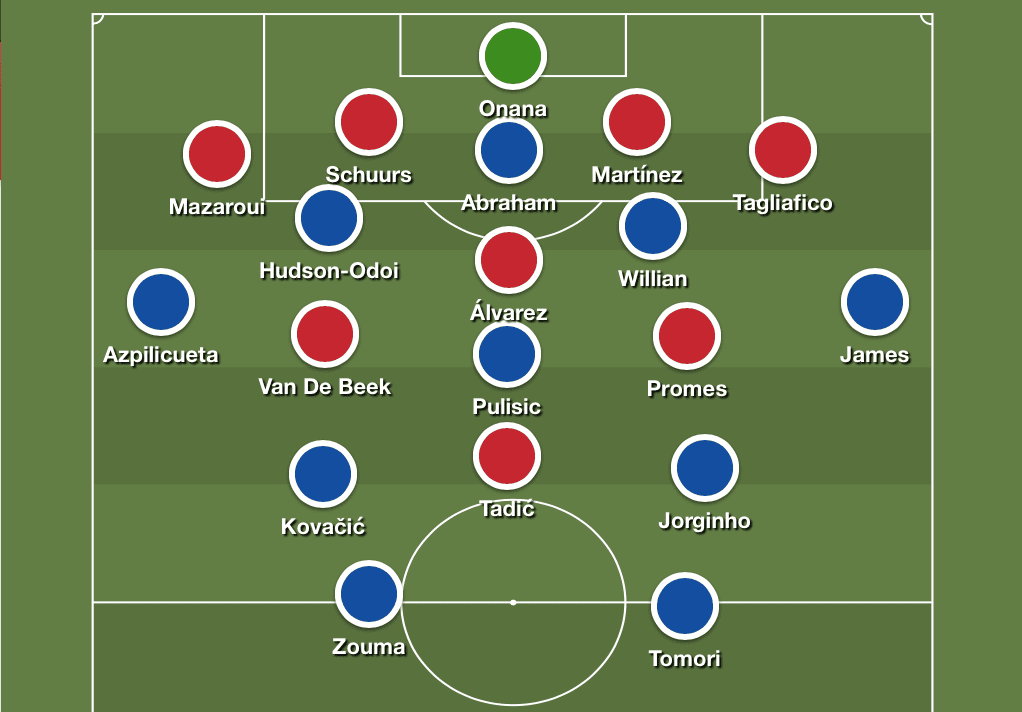
Who tops Group E?
In the showdown between Lampard and Ten Hag, Lampard seems to have won the battles, with his team winning in Amsterdam, and taking a point at home in London. However, Ten Hag needs to get his team to forget about the collapse that happened in London and look ahead to the rest of the games in the group. Ajax still have a chance to pip Chelsea to top the group. To do so they must better Chelsea’s results in the next two fixtures. Whoever does win the group gets the ‘easier’ draw in the Round of 16 and with both teams having such high ambitions in their respective leagues this season (Ajax are aiming to win back-to-back Eredivisie titles, while Chelsea are aiming for consecutive top-four finishes in the Premier League), they’ll both want to top the group. With domestic cups to also worry about, both managers will want the easiest tie possible, even though they are unlikely to admit this publically. It is unlikely that the two clubs will face each other again this season, but they are still very much in competition with each other.
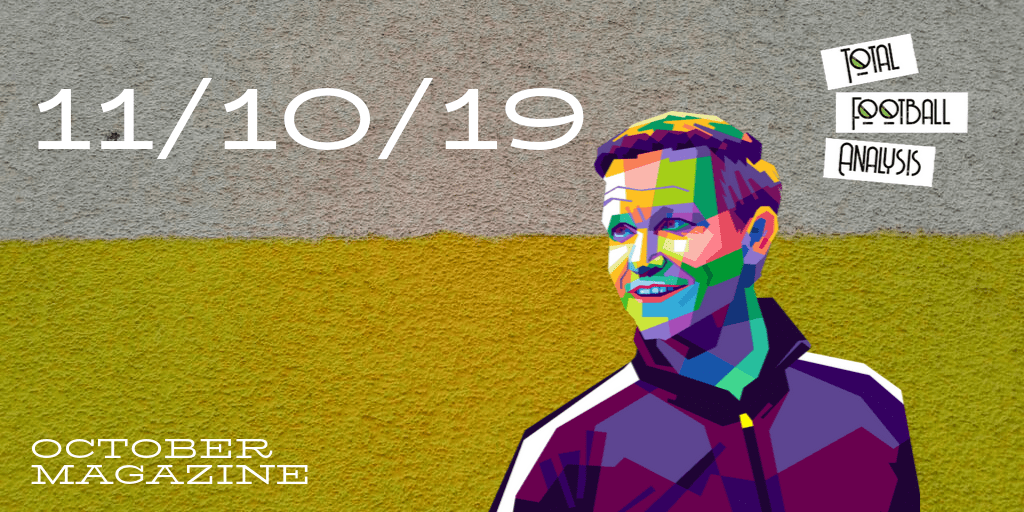
If you love tactical analysis, then you’ll love the digital magazines from totalfootballanalysis.com – a guaranteed 100+ pages of pure tactical analysis covering topics from the Premier League, Serie A, La Liga, Bundesliga and many, many more. Buy your copy of the October issue for just ₤4.99 here






Comments